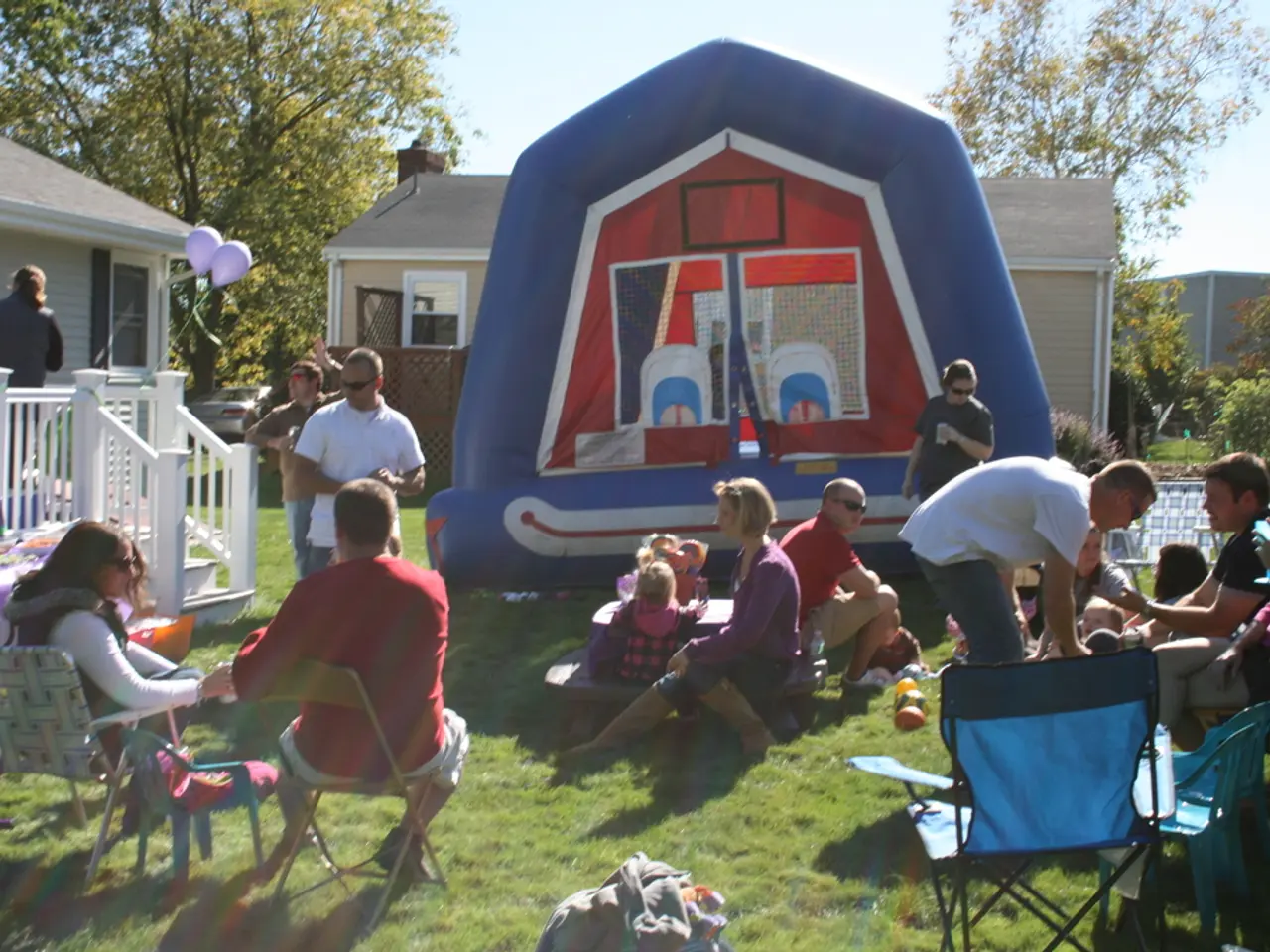Symptoms and indicators of a natural gas leak
In the United States, over 73 million residential, commercial, and industrial premises rely on natural gas for their energy needs. While this resource is essential for everyday life, it's crucial to be aware of the potential dangers and know how to respond if a gas leak occurs.
One of the most common signs of a gas leak is a distinct odor of sulfur or rotten eggs. This strong smell is added to natural gas to help detect leaks, often serving as the earliest warning sign. Other physical symptoms in people may include dizziness, headaches, nausea, fatigue, chest and muscle pain, vomiting, confusion, difficulty breathing, and shortness of breath. Pets, like cats, can also smell gas leaks due to their acute sense of smell, but they can suffer from poisoning as well. Signs of carbon monoxide or gas poisoning in pets include sudden weakness, lethargy, difficulty breathing, and other symptoms resembling those in humans.
Visual and auditory warning signs may also be present. Faint hissing or whistling sounds near gas appliances, pipes, or meters can indicate a leak. Indoor signs such as discolored walls near gas lines or unexplained dust movement might also be indicative of a gas leak. Outdoor signs like dead plants in localized areas, bubbles in standing water, or dust clouds may indicate an underground leak.
If you suspect a gas leak, immediate action is necessary. Evacuate the area immediately and do not attempt to investigate or fix the leak yourself. Avoid using electrical devices or open flames, and from a safe location, call 911 and the gas company (such as Ameren) to report the suspected leak. Seek medical attention if symptoms worsen, and ensure pets are evacuated to prevent poisoning.
Installing carbon monoxide and gas leak detectors can provide early warnings and help protect all occupants, including pets. It's also essential to schedule annual inspections for gas-burning appliances and gas pipelines by a certified inspector. The areas around gas-burning appliances and gas equipment should be kept unobstructed.
Gas leaks are highly flammable and can be ignited by sparks or phone calls. Once the leak has been located and repaired, it is essential to wait until officially notified that it is safe to return to the home, air out the house before going back inside, install carbon monoxide alarms, and consult a doctor after a gas leak has occurred, especially if a person notices long-term effects.
In conclusion, recognising these signs early and responding promptly according to these safety steps can significantly reduce the risk of harm to people and pets from gas leaks. By being aware of gas leak symptoms and signs, taking immediate action, and maintaining regular inspections, we can ensure a safer environment for all.
- Dizziness, headaches, nausea, fatigue, chest and muscle pain, vomiting, confusion, difficulty breathing, and shortness of breath can be signs of a gas leak in people.
- Pets, like cats, can also smell gas leaks due to their acute sense of smell.
- Signs of carbon monoxide or gas poisoning in pets include sudden weakness, lethargy, difficulty breathing, and other symptoms resembling those in humans.
- Faint hissing or whistling sounds near gas appliances, pipes, or meters can indicate a gas leak.
- Discolored walls near gas lines or unexplained dust movement might also be indicative of a gas leak.
- Outdoor signs like dead plants in localized areas, bubbles in standing water, or dust clouds may indicate an underground leak.
- Evacuate the area immediately if you suspect a gas leak.
- Do not attempt to investigate or fix the leak yourself.
- Avoid using electrical devices or open flames, and from a safe location, call 911 and the gas company to report the suspected leak.
- Seek medical attention if symptoms worsen, and ensure pets are evacuated to prevent poisoning.
- Installing carbon monoxide and gas leak detectors can provide early warnings and help protect all occupants, including pets.
- It's also essential to schedule annual inspections for gas-burning appliances and gas pipelines by a certified inspector.
- The areas around gas-burning appliances and gas equipment should be kept unobstructed.
- Gas leaks are highly flammable and can be ignited by sparks or phone calls.
- Once the leak has been located and repaired, wait until officially notified that it is safe to return to the home.
- Air out the house before going back inside after a gas leak has been repaired.
- Install carbon monoxide alarms after a gas leak has occurred and consult a doctor especially if a person notices long-term effects.
- Recognising these signs early and responding promptly can significantly reduce the risk of harm from gas leaks.
- By being aware of gas leak symptoms and signs, taking immediate action, and maintaining regular inspections, we can ensure a safer environment for all.
- A distinct odor of sulfur or rotten eggs is added to natural gas to help detect leaks, often serving as the earliest warning sign.
- Climate change can exacerbate gas leaks as warmer temperatures can lead to weakened infrastructure.
- The manufacturing industry is a significant contributor to gas leaks, as it relies heavily on natural gas for energy.
- Science has developed predictive models to estimate the impact of gas leaks on the environment.
- Workplace-wellness programs can educate employees on the signs of gas leaks and proper response procedures.
- Medical-conditions such as asthma, atopic dermatitis, and migraines can be exacerbated by exposure to gas leaks.
- Chronic diseases like cancer, diabetes, and cardiovascular diseases can be associated with ongoing exposure to gas leaks.
- Respiratory conditions like chronic obstructive pulmonary disease and emphysema can be worsened by gas leaks.
- Digestive-health issues like irritable bowel syndrome and gastritis can be triggered by gas leaks.
- Eye-health problems like conjunctivitis, cataracts, and dry eyes can result from exposure to gas leaks.
- Hearing loss or damage can occur from exposure to gas leaks, especially in cases of carbon monoxide poisoning.
- Health-and-wellness is essential to maintaining a high quality of life, and avoiding gas leaks is a part of that.
- Fitness-and-exercise can help strengthen the body and improve its ability to respond to gas leaks.
- Autoimmune disorders like rheumatoid arthritis, ankylosing spondylitis, and psoriatic arthritis can be triggered by long-term exposure to gas leaks.
- Neurological disorders like multiple sclerosis, epilepsy, and Parkinson's disease can be exacerbated by gas leaks.
- HIV, AIDS, and other immune-compromised individuals may be more susceptible to the effects of gas leaks.





